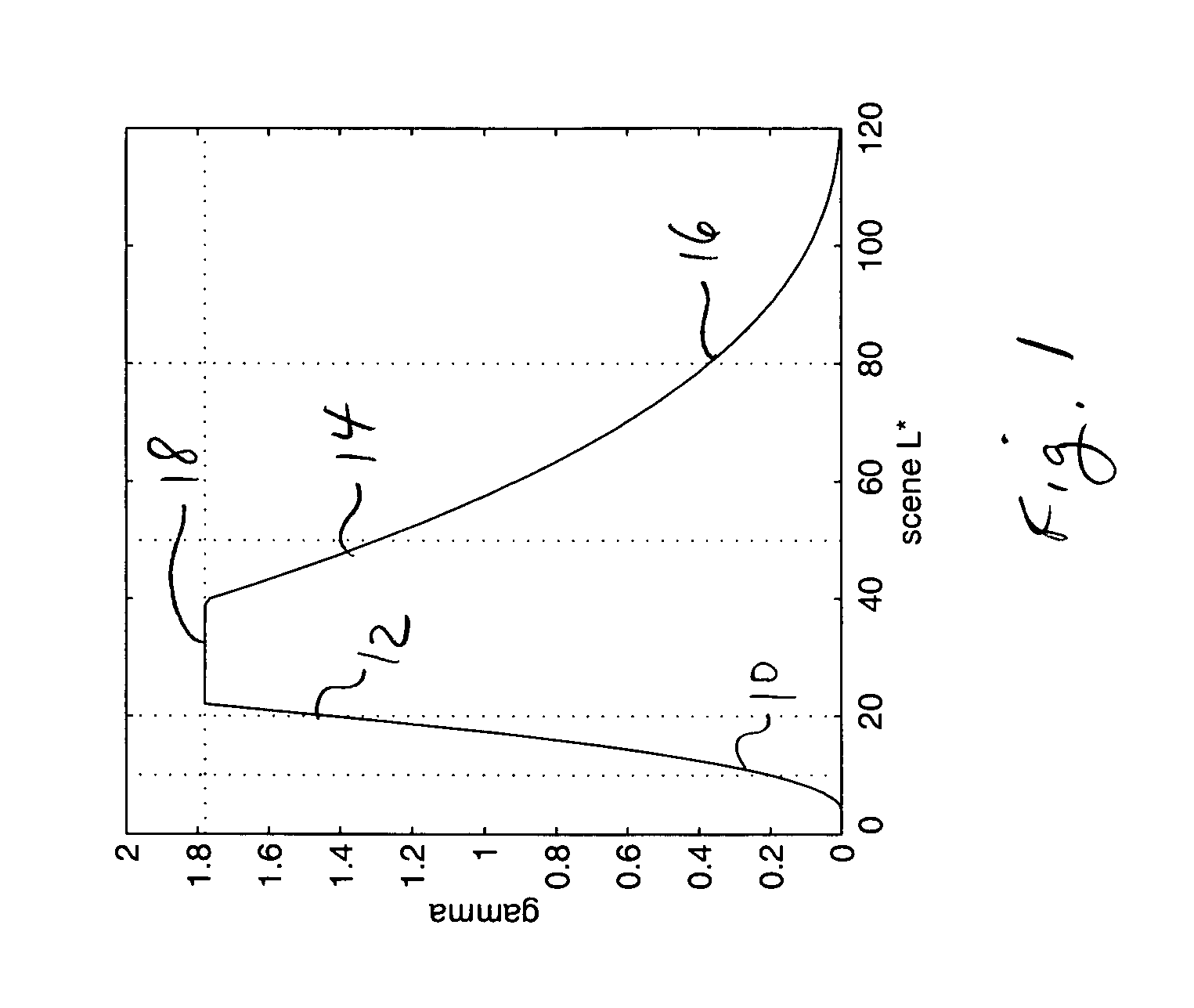Tonescales for geographically localized digital rendition of people
a digital rendition and tone scale technology, applied in the field of digital image processing and enhancement, can solve the problems of not addressing the implementation of a global tone reproduction curve optimized for the rendition of people with a wide range of skin tones, causing peoples faces to be harsh, and dupin does not teach or offer any direction regarding the use or adjustment of algorithms, so as to improve the rendering of skin tones and improve the effect of people's appearan
- Summary
- Abstract
- Description
- Claims
- Application Information
AI Technical Summary
Benefits of technology
Problems solved by technology
Method used
Image
Examples
example 1
[0088] In a particular embodiment, exposed Kodak Gold 200 Gen. 6 film is processed by Kodak™ Flexicolorm C-41 chemical development and submitted to a digital mini lab for printing. Kodak Gold 200 film was used as a representative example of color negative films from a variety of vendors.
[0089] The processed roll of film was submitted to a digital mini lab for printing. Referring to FIG. 9, the digital mini lab 100 includes a scanner 104, which is designed to receive and scan a roll of developed film 102. The roll of developed film 102 is transported past a sensor in scanner 104, which scans the images on the film 102 so as to provide a digital record of the customer images. The scanner 104 scans at a resolution sufficient to provide the desired quality prints, preferably, at a resolution of at least 1000×1500 pixels per inch for a 35 mm film frame, and more preferably at a high resolution equal to or greater than about 2000×3000 pixels per inch for the 35 mm film frame. Examples of...
example 2
[0109] In another embodiment, the image is captured using a digital camera, e.g., Kodak DX 6490, and printed on a Kodak Picture Maker® kiosk on thermal paper. For smooth skin tone reproduction on a 4×6 inch print without visible digital artifacts the sensor must at least have a resolution of 2 Megapixels, preferably above 3 Megapixels. Higher sensor resolutions are required for larger size prints. FIG. 13 describes the elements of the digital camera 52 which are necessary for practicing the invention. The digital camera 52 includes an electronic display as optical viewfinder for composing a scene (not shown), a 10:1 zoom lens 184 controlled by a zoom lens driver (not shown) which is in turn controlled by a processor 198. The zoom lens 184 includes an adjustable aperture and shutter (labeled as exposure and focus control 188) for focusing light from a scene onto an image sensor 188. The camera may also include a flash unit 190.
[0110] The image sensor 188 is in this case a single-chi...
PUM
 Login to View More
Login to View More Abstract
Description
Claims
Application Information
 Login to View More
Login to View More - R&D
- Intellectual Property
- Life Sciences
- Materials
- Tech Scout
- Unparalleled Data Quality
- Higher Quality Content
- 60% Fewer Hallucinations
Browse by: Latest US Patents, China's latest patents, Technical Efficacy Thesaurus, Application Domain, Technology Topic, Popular Technical Reports.
© 2025 PatSnap. All rights reserved.Legal|Privacy policy|Modern Slavery Act Transparency Statement|Sitemap|About US| Contact US: help@patsnap.com



